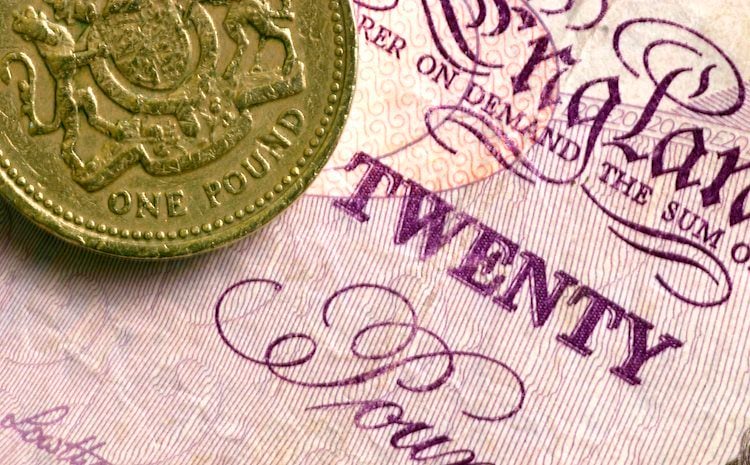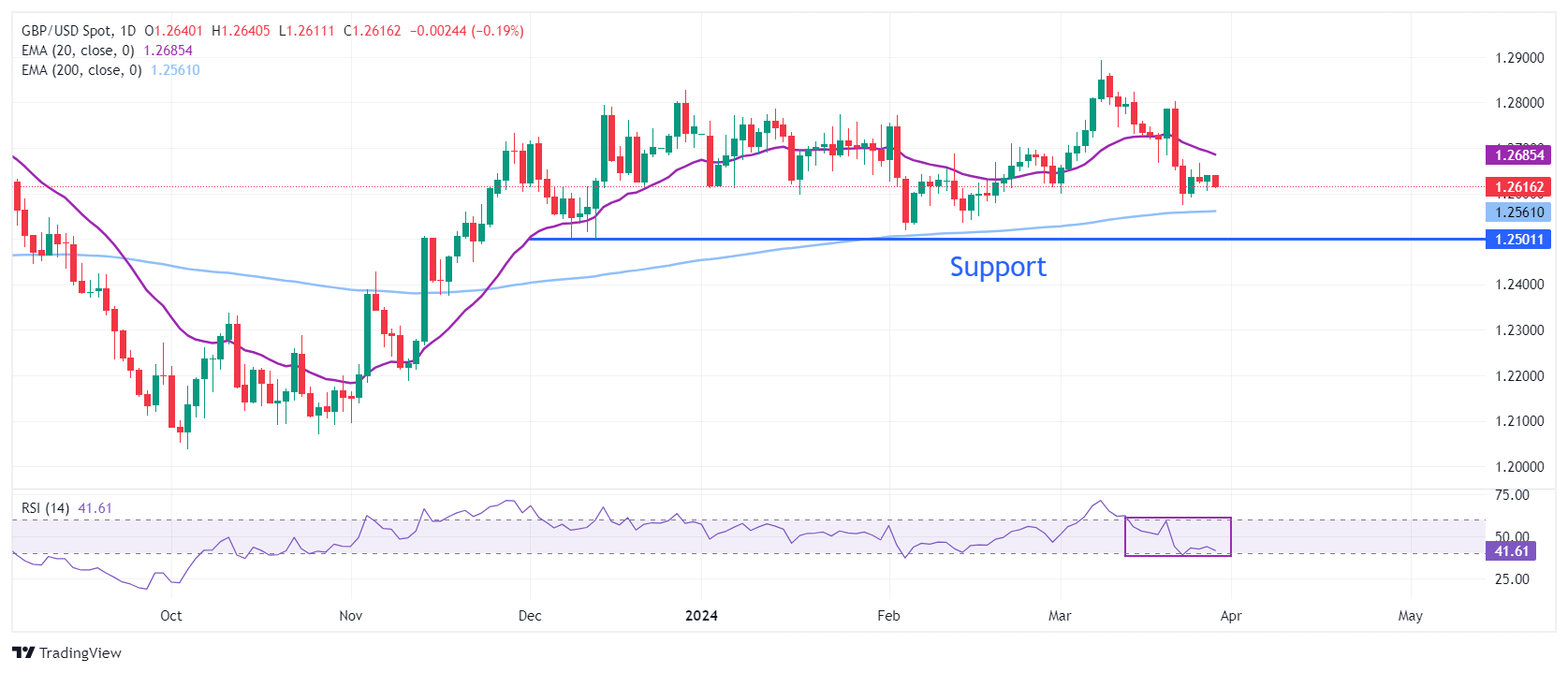Products You May Like
- The Pound Sterling rises above 1.2600 against the US Dollar ahead of the US core PCE inflation data for February.
- The Fed’s preferred inflation gauge could give clues over when the Fed may begin the rate-cut cycle.
- UK’s soft inflation data for February has lifted expectations for BoE rate cuts in June.
The Pound Sterling (GBP) recovers to 1.2640 against the US Dollar in Thursday’s early New York session. More broadly, the GBP/USD pair struggles for direction as investors wait for fresh cues about when the Bank of England (BoE) will begin reducing interest rates. The United Kingdom’s inflation has come down significantly, but BoE policymakers are expected to adopt a cautious approach as early rate cuts could revamp price pressures again.
Investors expect that the BoE will start cutting rates from the June meeting. The expectations have been prompted by sharply easing inflation in February. Also, no BoE policymakers see the need for more rate hikes, indicating that the current level of interest rates is sufficiently restrictive. Generally, the Pound Sterling weakens when investors expect the BoE will start reducing borrowing rates early.
Meanwhile, the UK Office for National Statistics (ONS), released on Thursday, revised its Q4 2023 Gross Domestic Product (GDP) estimates, confirming that the economy contracted by 0.3% in the October-December period.
The US Dollar surrenders gains ahead of the United States core Personal Consumption Expenditure (PCE) Price Index data for February, which will be published on Friday. The measure, which gauges underlying inflation, is expected to have increased steadily by 2.8% annually.
Daily digest market movers: Pound Sterling recovers intraday losses while US Dollar retreats
- The Pound Sterling consolidates in a tight range, slightly above 1.2600, as investors seek fresh guidance on the UK interest-rate outlook. Bank of England policymakers are mixed about rate cuts. Jonathan Haskel said in the Financial Times on Wednesday that rate cuts should be “a long way off.” Haskel further added: “Although the fall in headline inflation is very good news, it is not informative about what we really care about. What we really care about is the persistent and the underlying inflation.”
- The comments from Jonathan Haskel suggest that he has low confidence in the progress of inflation declining to 2%, and rate cuts are still off the table. On the contrary, BoE Governor Andrew Bailey said in a recent interview with the Financial Times that market expectations for two or three rate cuts this year are not “unreasonable”. Regarding the inflation outlook, Bailey said “We are not seeing a lot of sticky persistence.”
- Currently, market expectations for BoE rate cuts have been brought forward to the June policy meeting from prior anticipation for August after UK inflation softened more than expected in February. Apart from that, the BoE’s slightly dovish outlook on interest rates in last week’s monetary policy statement has boosted expectations for June’s rate cuts.
- Meanwhile, the market sentiment improves as the S&P 500 trades slightly positive after opening. The US Dollar Index (DXY) rises to 104.40, an inch away from its monthly high of 104.50, amid uncertainty ahead of the United States core PCE Price Index data for February.
Technical Analysis: Pound Sterling rebounds sharply above 1.2640
The Pound Sterling trades back and forth in a narrow range around 1.2600. The GBP/USD pair seems vulnerable around 1.2600 as the 20-day Exponential Moving Average (EMA) at 1.2690 has turned down. The asset is slowly declining to the 200-day EMA, which trades around 1.2564. On the downside, the horizontal support from December 8 low at 1.2500 would provide cushion to the Pound Sterling bulls.
The 14-period Relative Strength Index (RSI) slips to near 40.00. A bearish momentum would trigger if the RSI dips below this level.

